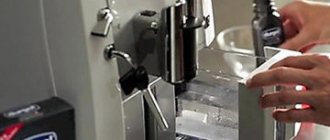Hard water is an everyday reality in our homes. Therefore, it is enough to neglect cleaning the Nespresso for a short time in order to then deal with a thick layer of scale on its parts. After all, some minerals, such as calcium and magnesium, affect the formation of scale when exposed to temperatures above 550C.
Calcified deposits not only affect the taste of the coffee, but also significantly reduce the performance of the machine. However, there are many home remedies that will magically help remove plaque.
To ensure that your equipment always works properly, it is useful to know how to descale your Nespresso coffee machine at home.
Cleaning the capsule coffee maker from scale
If you have a capsule coffee maker like a Nespresso, there are only four things you need to do to get consistently good coffee, quickly and without any problems.
1. Fill with clean and soft water.
2. Buy capsules with good coffee, freshly roasted.
3. Keep the outside of the coffee maker clean.
4. Keep the inside of the coffee maker clean.
If everything is simple and clear with the first three points, then questions arise with the fourth.
Most of us have seen limescale in a kettle, but it also exists in coffee makers, where there are thin tubes that clog easily.
Cleaning them with citric acid or vinegar is dangerous. These substances can damage the rubber parts of the coffee maker, which in turn will void the warranty. It is better to use special descalers for espresso coffee makers; they are more expensive, but they will not damage anything. One half-liter bottle is enough for 5-6 uses.
If you use reverse osmosis water, you still need to clean it, it just can be done for preventive purposes and much less often.
Typically, a capsule coffee maker is cleaned every 300 drinks. If you don't have a drink meter, set a reminder to clean it every three to four months.
There are two ways to keep your car performing at its best: keeping the outside clean and the inside clean. The first one is quite simple, but then it gets a little more complicated. Thanks to Nespresso, though, for making this job incredibly easy. Previously, you had to take the espresso machine apart, and in some cases, remove the scale yourself using tools - nothing more! Nespresso's proprietary descaling liquid gets rid of all the buildup in your machine. But first, let’s answer one simple question: What in the world is “scale”? “Scale” is the name we use to describe mineral deposits. These growths are hard and rough to the touch, much like the hardened outer layer (scales) of reptile skin (if you've ever had the pleasure of touching an iguana, you'll know). They are a common sight in the coffee world. Water (particularly tap water) contains a certain amount of minerals that react when the water is heated and begin to harden: when the temperature drops, they become extremely hard and cannot be removed without the help of powerful chemicals. Soon enough, the size of these build-ups will compromise your machine's ability to function—and it may even clog up.
Do not use vinegar or any other descaling agent. This could be dangerous to your machine and will certainly void your warranty immediately.
Descaling your Nespresso coffee maker
Ideally, you should descale your machine once every 300 uses (or capsules). Some Nespresso machines have a very practical feature that lets you know when it needs descaling (some will even refuse to operate until the descaling is done), but it's better to be ahead of your descaling machine's alarm.
How to clean
Fill the water tank with fresh water. Remove all capsules.
Place the empty cup on the tray of the machine.
Enter descaling mode. For each model, entering this mode may differ. Usually it is enough to hold the brew button for a few seconds until it starts flashing, then you need to press the button as if you were making coffee.
Useful tips
The manufacturer has already taken care of many processes for comfortable use of the device. But some advice won't hurt.
- The coffee machine has a dispenser that will pour as much water from the container as needed. Therefore, when pouring water, there is no need to measure the quantity.
- If you are going to use reusable capsules, first make sure that the unit is capable of using them.
- If you know that the coffee machine will not be used in the near future, it is better to drain the water from the reservoir, as it promotes the growth of fungi and bacteria.
Descaling your Nespresso coffee machine
Hard water is an everyday reality in our homes. Therefore, it is enough to neglect cleaning the Nespresso for a short time in order to then deal with a thick layer of scale on its parts. After all, some minerals, such as calcium and magnesium, affect the formation of scale when exposed to temperatures above 550C.
Calcified deposits not only affect the taste of the coffee, but also significantly reduce the performance of the machine. However, there are many home remedies that will magically help remove plaque.
To ensure that your equipment always works properly, it is useful to know how to descale your Nespresso coffee machine at home.
What can pollution lead to?
When scale appears, heat transfer deteriorates, as a result of which the temperature of the heater will be higher and its service life will decrease. By settling on the walls of the tubes, limescale reduces the diameter of the hole. Increased pressure creates additional stress on the sealing elements of the structure. This will lead to premature failure of the coffee machine units.
Why fight sediment?
For normal operation of the device, it is necessary to descale it throughout its shelf life. In addition, timely cleaning guarantees the expected and familiar taste of coffee.
Why deal with sediment?
Nespresso maintenance is a necessary step that every coffee machine owner should remember. To ensure excellent coffee quality, the equipment parts should be descaled from time to time.
If you use water filters, the cleaning procedure can be carried out less frequently.
Limescale on the coffee machine:
- significantly increases operating costs;
- may lead to premature failures;
- reduces heat transfer and causes problems related to drink temperature;
- causes aesthetic problems in coffee (the appearance of white flakes);
- activates valve leakage;
- reduces interaction with ingredients, negatively affecting their taste.
By constantly cleaning your Nespresso, you can
- save energy consumption;
- anticipate disruptions to work;
- maintain the appearance of drinks;
- ensure consistent quality of brewed coffee.
Operating rules
Following the manufacturer's recommendations will increase the life of the coffee machine and enjoy a pleasant drink. For this it is enough:
- use original capsules,
- regularly clean with professional products,
- do not turn off the device in the middle of the drink preparation cycle,
- make repairs in authorized centers.
Regular cleaning of the coffee machine is the key to its long operation.
Which acid to choose
The ideal solution in the fight against calcified formations on the walls of the coffee machine is vinegar. It contains acetic acid, which is a weak organic acid.
The substance can treat internal surfaces even with a minimum volume. Appropriate amounts of vinegar should be applied depending on the degree of contamination of the stone.
Vinegar is a natural and toxic waste-free product. Its acidic properties help get rid of scale, mineral deposits and even the coffee oil left behind from the beans. Citric acid also helps in the fight against scale.
In other cases, special chemicals that are sold in stores and supplied in liquid or crystalline form will help. They most often contain organic sulfamic acid, which is an excellent product for a coffee machine and much safer for various types of metals.
Easy to prepare - easy to maintain?
In our case, when working with water where there are heating elements, there is no escape from this unpleasant word - scale. Hard water contains potassium and magnesium salts, and when heated, they turn into a hardened element. If you do not clean your coffee machine in a timely manner, then you will face minor troubles that lead to complete collapse and failure of your machine. Drinking soft water to avoid scale is not a solution, since the prepared coffee will not have a unique aromatic taste.
In this case, you need to use a water softener or use distilled water. But what to do if you missed the moment and brought your coffee machine to such a state that it needs cleaning. Are you confused about how to descale your nespresso coffee machine? Let's figure out how critical the situation really is.
According to the advice of experts, and as provided in the instructions, only special products intended by the manufacturer are used to clean the device.
You can, of course, do it at your own peril and risk - resort to the help of traditional methods, but you need to be careful. In the case of a coffee machine, you need to use only a proven method, because the equipment is not cheap, and various chemical compounds can harm your health.
How to descale Nespresso
The process of cleaning calcified deposits from a coffee machine is divided into two stages:
- Cleaning removable parts from dirt - wash all parts of the machine with warm water or wipe with a damp sponge.
- Descaling – Use active reagents to remove deposits from the water tank.
Such simple steps will not only help to wash away plaque, but will also cover parts of the coffee machine with a protective layer, which will prevent the formation of oils and coffee residues, as well as deposits of calcium salts for a long time, which will significantly increase the service life of kitchen equipment.
Remove scale with vinegar
What you will need:
- coffee machine;
- water;
- table vinegar;
- hot water;
- sponge;
- dry towel.
Nespresso descaling instructions:
- Drain the reservoir, rinse it and clean out any coffee grounds that remain in the filter.
- Make a solution of water and vinegar - fill the chamber to full volume with equal parts of water and acetic acid.
- Run half of the brew cycle. Turn off the coffee machine and leave it for an hour.
- Finish the brewing cycle - after an hour, turn on the equipment and finish the cycle.
- Discard the vinegar liquid and run a new cycle with clean water. Repeat twice to get rid of any remaining vinegar.
- Wipe down the appliance and wash tanks and other removable containers in hot soapy water.
- Put the car back together and make yourself a big cup of coffee!
Cleaning a delonghi coffee machine involves approximately the same steps.
Cleaning plaque with citric acid
The process of cleaning a coffee machine with citric acid is the same as when using vinegar. We take the amount of the ingredient in the ratio of 2 teaspoons of powder per 1 liter of water.
Anti-scale tablets
Cleaning with special descaling tablets.
In order to remove plaque from the coffee machine, you need to add special tablets to the water tank and start the coffee brewing cycle. After the procedure, you should thoroughly rinse the machine with plain water at least twice by starting the coffee preparation program.
Nespresso descaling is an action that allows you to enjoy trouble-free operation of your kitchen equipment for a long time.
In addition, the products used allow you to clean the internal parts of the machine from coffee essential oils and coffee residues, which negatively affect the quality of brewed coffee. If you need to clean a coffee machine of another brand, then select a product for saeco.
The process itself is very simple - just put the cleaning agent in the water tank and press the appropriate button - the machine will do the rest.
Standard method - hand washing
Even washing the device with ordinary means helps slow down the formation of scale. To understand how to do it correctly and get the desired result, use step-by-step instructions:
- The tray is removed from its mounting location and washed using the usual dishwashing detergent or soap, and then under running water. After leaving it to dry, we take on the next knot.
- The same procedure applies to the capsule container, water tank and machine lid.
- Be sure to wipe the capsule intake sensor.
- The drink dispenser is also washed.
- Wipe and, if necessary, wash the outside of the body and accessible components. Afterwards the device is assembled in the reverse order.
The machine is cleaned when the taste changes.
Use of other special means
If the product is universal and the manufacturer clearly indicates this on the packaging, you can safely use it. Proper cleaning of a coffee machine from the manufacturer Delonghi can be done with improvised means, for example, citric acid. This product needs to be diluted, poured into the tank and turned on.
Acid is a natural, safe cleanser for the human body that removes the effects of hard water.
Cleaning the filter is no worse than using specialized means. Acid is a natural, safe cleanser for the human body that removes the effects of hard water. If you heat it to a high temperature, it will also cope well with scale.











